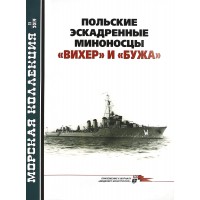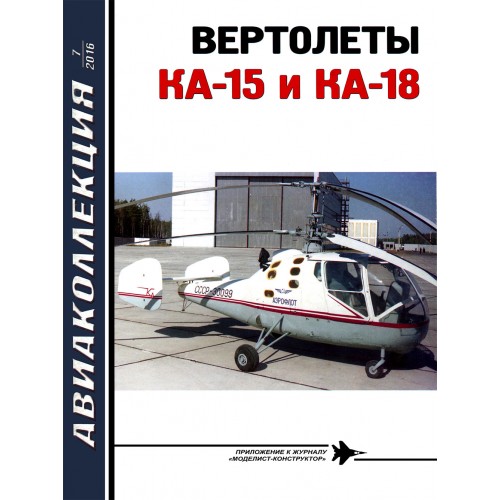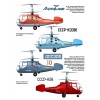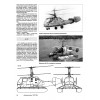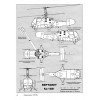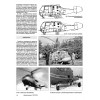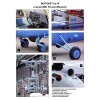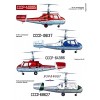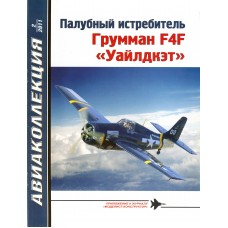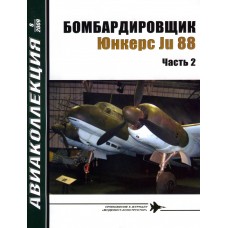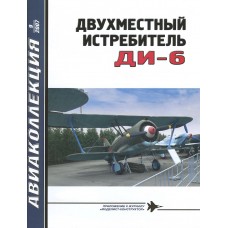AKL-201607 AviaCollection / AviaKollektsia series 07/2016: Kamov Ka-15 and Ka-18 Helicopters Story. Photos, schemes, colour pictures. 32 pages, soft cover, text in Russian.
CREATION OF HELICOPTER
Ka-15 and Ka-18 helicopters were made according to a rarely seen scheme with coaxial rotors. Experiments with primitive models of helicopters of this scheme were carried out in the early XIX century. It is considered that the first coaxial scheme tried to implement I. I. Sikorsky in 1910.
However, insufficient engine power did not allow the helicopter built by him to overcome the earth's gravity. During the Second World War, a similar machine was worked on in France, but published materials on the results of their tests can hardly be considered reliable. Our compatriot Nikolai Ilyich Kamov managed to develop a full-fledged helicopter with a coaxial scheme for the first time.
The initial stage of creating such devices, when the Ka-8 and Ka-10 machines appeared, ended successfully, but we did not have to talk about their widespread use in the armed forces, and even more so in the national economy. The reason is simple-customers were primarily interested in the load capacity and comfort of the new vehicle. And the caution with which the team of the design Bureau of N. I. Kamov approached the solution of the task was not superfluous. Too many obstacles, compared to the usual single-screw scheme, got in the way. The main one was considered to be the high probability of collision of the rotor blades, not to mention the sudden appearance of "earth resonance", which will be discussed below.
Therefore, the Kamov design Bureau could not afford such a sharp jump in engine power, as M. L. Mil and A. S. Yakovlev did when developing their single-rotor mi-1 and Yak-100 helicopters. When creating the ship's ka-15 helicopter, they had to settle for a 225-horsepower AI-14V star engine, an AI-26V take-off power of 575 HP, used on the Mi-1 and Yak-100.
However, single-rotor helicopters also encountered difficulties. Many cases were recorded when the main rotor blades cut the tail beams on which the tail rotor was located.
It was not possible to enlist the support of the leadership of the Civil air fleet to create a small helicopter against the background of the "heavy" Mi-1, but the command of the Navy could be counted on. The future Ka-15 required much less space to land on the ship's deck than the Mi-1, was less sensitive to wind direction, and could be useful not only for communication, but also for searching for submarines of a possible enemy and fighting them.
The first attempts to use rotorcraft to combat submarines were made at the end of the Second World War. The Germans used the FL 282 "Kolibri" and FA 223 "Drache" helicopters made by the Flettner and Focke-Angelis companies, respectively, and in the United States - the R-4 helicopter of I. I. Sikorsky.
The Ka-10 was the first rotorcraft designed to be based on ships of the Russian Navy. In January 1953, the commander of the naval aviation, E. N. Preobrazhensky, came to the conclusion that this verto-let, although it had passed the tests, due to its limited cargo capacity, it was not advisable to adopt it.
But the commander-in-chief of the fleet had his own opinion, and in the spring of 1952, as part of the black sea fleet air force, the formation of the 220th separate Ka-10 detachment led by ka-pitan A. Voronin began, which was completed by mid-may 1953.the place of its base was the Kulikovo field airfield, near Sevastopol. The day of March 14, 1952 can be considered the official date of birth of Russian shipboard helicopters, and the Ka-10 is actually a "school Desk" for which their first pilots gained experience.
The design of the future Ka-15 under the designation "product B" began on an initiative basis in August 1950 in OKB-3, stationed in the Moscow district of Sokolniki. At this time, a war was raging in Korea, which at any moment could turn into a World War, since the southerners were supported by coalition armed forces under the auspices of the United Nations. Then the US began to widely and very successfully use helicopters for search and rescue operations and communications.
The Soviet Union could not have failed to notice this. The Russian helicopter industry was lagging behind. Specialists of the design Bureau Of N. I. Kamov offered the military to develop several variants of screw-snout machines, including the heavy two-engine Ka-14-2, but the customer then preferred the single-engine VD-12, the future Mi-4, and the Yak-24, made according to the longitudinal scheme of the "flying wagon" with two power plants from the same Mi-4.
In this situation, Kamov had no choice but to focus all his efforts on the future of the Ka-15.
It should be noted that the greatest contribution to the creation of the helicopter was made by V. B. Bar - shevsky, A. I. Vlasenko, D. K. Efremov, M. A. Kupfer and N. N. Priorov.
Since the spring of 1951, the work was carried out according to the plan of pilot construction of the Ministry of aviation industry, and only in June the corresponding government decree was issued. In the same year, the preliminary design of the helicopter was defended, and in December the customer was presented with a full-size layout. The future Ka-15 was developed for the AI-14R engine with a take-off capacity of 245 HP. The crew consisted of three people.
The features of this helicopter included not only the coaxial scheme, but also the fill factor for one three-bladed propeller (the ratio of the area of all the blades to the area covered by the main rotor), which was 3%, that is, each blade of one propeller accounted for only 1%, which was not previously seen in world practice.
According to the task, the speed had to be at least 150 km / h, the static ceiling was 1000 m, and the dynamic ceiling was 3000 m. At the same time, the normal bomb load was determined at 100 kg, the maximum-at 300 kg. According to the project, the normal load was the same 100 kg, and the overload due to insufficient engine power was only 200 kg. The practical duration of the flight with an aeromagnitometer "Chita", a normal bomb load and a seven percent navigational fuel reserve was estimated at 2.5 hours.
The first copy of the helicopter was ordered by the government to be presented for state testing in the first quarter of 1953, and the second, with dual controls, in the second quarter of the same year.
Construction of the first prototype of the machine was completed in early 1953. In the same year, Kamov and Mil teams celebrated a housewarming party at the plant No. 82 in the Moscow district of Tushino, where they created a new helicopter experimental design Bureau OKB-4 headed by Nikolai Ilyich Kamov.
AKL-201607 AviaKollektsia 7 2016: Kamov Ka-15 and Ka-18 Helicopters Story
- Brand: AviaCollection / AviaKollektsia
- Product Code: AKL-201607 In Stock
-
$3.90
Available Options
Look at these products too:
Tags: aviation




